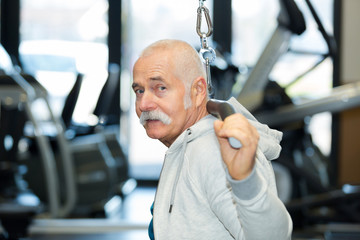 Staying active as you age provides many benefits. But did you know you can actually slow down the rate at which your muscles and strength deteriorate? With the right combo of healthy eating and the right types of exercise, you can feel supplier, have greater mobility and stay stronger for longer. We bet you’re keen to read more?
Staying active as you age provides many benefits. But did you know you can actually slow down the rate at which your muscles and strength deteriorate? With the right combo of healthy eating and the right types of exercise, you can feel supplier, have greater mobility and stay stronger for longer. We bet you’re keen to read more?
Easy as 1, 2, 3
We know you appreciate that you have to move it or lose it. But staying active is not simply about moving or doing more. It’s about doing the right types of physical activity and working the right parts of your body, especially your muscles.
- The first type of activity you want to do is cardio, or “huff and puff” exercise that increases your heart rate, gets the blood pumping and decreases your risk of cardiovascular disease. It’s as easy as picking up your walking pace and can be as vigorous as a tailored Zumba class for active, older people.
- The second type of exercise is stretching to help stay supple and reduce stiffness. Most structured classes will involve stretching exercises as part of the warm up and cool down, but you can also do more with yoga or Pilates.
- The third and most important type of activity is resistance, weight or strength training. This involves any activity that makes your major muscles resist and have to work against the force of gravity like repetitively lifting a weight, pulling on a large elastic exercise band or a bar of gym equipment. But you can also do this at home with everyday items like large cans of soup! Or use your own body weight to do pushups or squats.
Count to 10
 The idea is to progressively increase your resistance weight to build and maintain muscular size and strength and stay stronger for longer.
The idea is to progressively increase your resistance weight to build and maintain muscular size and strength and stay stronger for longer.
It’s important to consult with a qualified exercise physiologist or certified personal trainer on a plan that’s right for you. But as a general rule of thumb, you just count to ten.
Start off with a weight or resistance that you’re able to complete around ten repetitions (reps) of a particular exercise, such as a calf raise. Over time the exercise will feel easier and you may find yourself able to do more reps without tiring as easily. Once you’re comfortable doing more, say 20 reps, it’s time to step it up a notch and increase the weight or resistance further. Start off with this new weight level and a new challenge of ten repetitions again as part of your regular program. And repeat as you gain strength and confidence.
Rest, refuel and recover
In order to get the most out of your resistance training, you need to be working all the major muscle groups in a series of exercises. You also need to give your muscles time to repair and recover after a workout, at least 24 hours to allow sufficient recovery time before working the same muscle groups again. Choosing the right high quality protein fuel, like dairy foods, can help even further.
Excited to learn more?
Just click on the links within this article for more in-depth advice and tips or browse our archives. And start your journey to staying stronger for longer today.
Making change takes time and effort, so you need to know that it’s going to be worth it. Fortunately, you don’t have to take our word for it – you can share your own experiences and learn how others have discovered benefits like increased strength, better mobility and sustained energy here on GrownUps.
By Emma Stirling APD









Join the Discussion
Type out your comment here:
You must be logged in to post a comment.